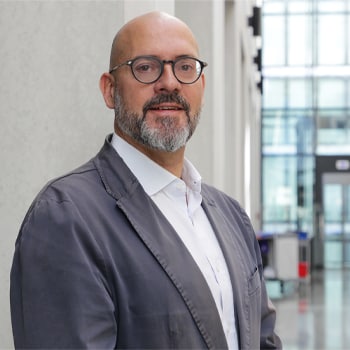
Artful investment Blending art into the wealth management picture
2 minute read
14 October 2019
 Vincent Gouverneur Luxembourg
Vincent Gouverneur Luxembourg Adriano Picinati di Torcello Luxembourg
Adriano Picinati di Torcello Luxembourg Anders Petterson United Kingdom
Anders Petterson United Kingdom
The wealth of the high-net-worth individual more than doubled between 2008 and 2018. There is growing interest in allocating that wealth to collectibles, but to solidify art as an investment asset, wealth managers should adjust their perspectives.
No one in the wealth management industry is oblivious to the opportunities offered by the art market. Auction sales data have long indicated that art is a long-term asset whose value remains protected: a smart choice for high-net-worth individuals looking to invest in collectibles. In this context, it can be puzzling to consider the disconnect between global wealth growth and art market sales. Something is standing in the way of investors’ full commitment.
Learn more
Explore the financial services collection
In a hurry? Read a brief version from Deloitte Review, issue 26
Create a custom PDF or download the issue
Learn about Deloitte’s services
Go straight to smart. Get the Deloitte Insights app
Deloitte assessed this situation, and the art market as a whole, in our 2019 annual Art & Wealth Management Survey. We polled 54 private banks and 25 family offices involved in wealth management, and surveyed other important stakeholders in the art and finance worlds, including 105 major art collectors and 138 art professionals from around the globe. They shared their opinions on art as an asset class, their motives, their current and future involvement in the art market, and challenges and prospects.
A key finding of our research is that today’s high-net-worth investor does not base decisions on the same factors as their grandparents, or even their parents. They prioritise emotional satisfaction alongside financial gain: a byproduct of a generation connected through technology, and more acutely aware of social injustice and their own global footprints. For these modern-day investors, buying a valuable painting is not always enough to bring gratification. They have their eyes on art technology (ArtTech) start-ups, non-commercial art, and cultural projects and institutions, which they can fund through innovative investment and financing programmes.
Global awareness has also tightened the vice of scrutiny in terms of market transparency and anti-corruption measures extend to practically every industry - art is no exception. Buyers’ trust in the art market depends on its level of transparency. The survey results made this clear, showing that a lack of transparency was regarded as one of the top issues that is most threatening to the market.
Regulation and technology are stepping up to address opaque practices. In particular, the EU’s 5th Anti-Money Laundering Directive, coming into force in January 2020, will include the art trade and will likely have a significant effect on all aspects of the market. Technology is also poised to address the problem of transparency, through ArtTech start-ups’ use of blockchain, more data, better data analytics and artificial intelligence. But transparency, and many of the other challenges raised in Deloitte’s research, require action from all stakeholders in the art and financial services industries – potentially even governments. A common vision is needed, as well as standards and guidelines to achieve it.
Wealth managers, for their part, should consider how their clients are perceiving art as an asset class. Based on the insights revealed in Deloitte’s survey, adopting a new approach to art and wealth management services can solidify a competitive stance, satisfy investors’ emotional interests and foster closer ties with clients. A large majority of survey respondents have been answering the call with a more holistic wealth management advisory service. They are the ones who have spotted new opportunities in the art market’s rising tide of change, and are best positioned to reel them in.
To get a broader picture of the art market and current perceptions of art as an asset as well as for an interview with the Responsible Art Market Initiative, please download the full PDF report.
More on Investment management
-
The future of wealth in the United States Article9 years ago
-
Decoding corporate share buybacks Article7 years ago







